By Steve Meacham
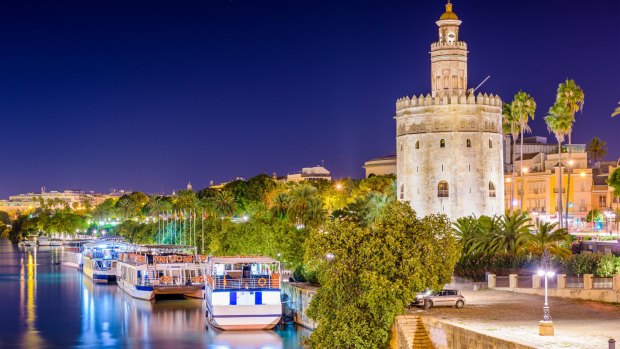
Seville, Spain at the Torre del Oro on the Guadalquivir River.Credit: Alamy
There's no doubting Seville is one of Europe's most superbly operatic cities. Certainly Mozart, Rossini and Bizet – none of them Spanish – must have thought so, because each composer set one of his most famous operas here.
Of the three, only Mozart's Don Giovanni – based on a fictional Spanish lothario called Don Juan and first performed on Oct 29, 1787 in Prague – was an immediate success.
Rossini's Barber of Seville, which premiered at Rome's Teatro Argentina on February 20, 1816, was hissed and booed at throughout its initial performance, damned as a disastrous failure.
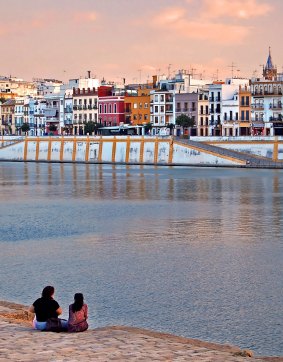
Triana, Seville.Credit: Juampiter
As for Bizet's Carmen, which opened at Paris's Opera-Comique on March 3, 1875, it played to half empty houses for most of its run, overshadowed by Verdi's Requiem which was being staged at the same theatre.
Of course, Bizet never wrote another opera. He died on June 3, the day after Carmen's 33rd performance. He was only 36 but his death, ironically, boosted interest in his opera which meant its run was extended. One of those audience members who attended the extended performances was Tchaikovsky, who wrote in a private letter: "Carmen is a masterpiece in every sense of the word".
If I sound like an operatic know-it-all, it's only because I am in Seville, the capital of Andalusia, being guided round a city I have been to several times before (and loved more each time I visit) by Lidia Dominguez.
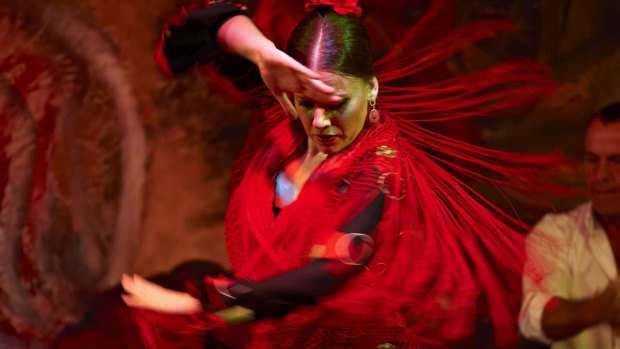
Flamenco dance in Seville.
Lidia is one of several specialist city guides employed by Insight Vacations during our meandering luxury coach tour through Portugal and Spain.
She's a proud citizen of Spain's fourth largest city, and not obviously operatic, given her cheerful demeanour and un-diva-like slim frame. But today Lidia is having to busk it.
You've obviously heard of Seville's magnificent cathedral, one of the largest, most impressive and most historically interesting cathedrals in the world because of its position for so many centuries on the front line of the culture wars between Islam and Christianity? Well, today it is closed.
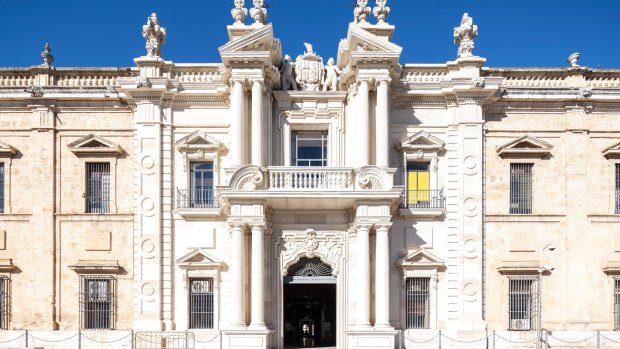
Royal Tobacco Factory, now University of Seville. Where Carmen made cigars.Credit: Alamy
Maria de Rosario Cayetana Fitz-James Stuart y de Silva, also known as the Duchess of Alba, has just died. It wasn't totally unexpected (unlike Bizet's death) since she was 88.
But her demise is a big thing here in Spain. According to Guinness World Records , she was the most titled aristocrat in the world. While we are in Seville, someone Spanish tells me that meant "even Queen Elizabeth II had to bow to the Duchess when they met".
According to the world's gossip pages, the Duchess of Alba also deserved world records for the number of times she'd been under a plastic surgeon's knife. Or for the largest gap between an aristocratic bride's age and a third husband (Alfonso Diez Carabantes, a civil servant/PR executive): 24 years, since you're asking.
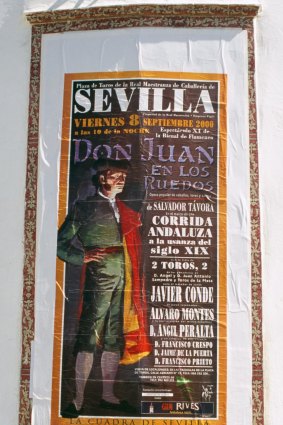
A poster advertising the opera Don Juan in Seville.Credit: Alamy
Anyway, Seville Cathedral is closed for the entire time we are in the city, because the Duchess of Alba, Spain's largest landowner outside the royal family, was a generous supporter of the Catholic church, which has gone into mourning at her death.
I'm not bitter. These things happen in Europe, and are part of its charm.
So Lidia is giving us the Seville tour you do if you CAN'T venture inside the city's most famous tourist attraction. And, of course, there's still lots to enjoy.
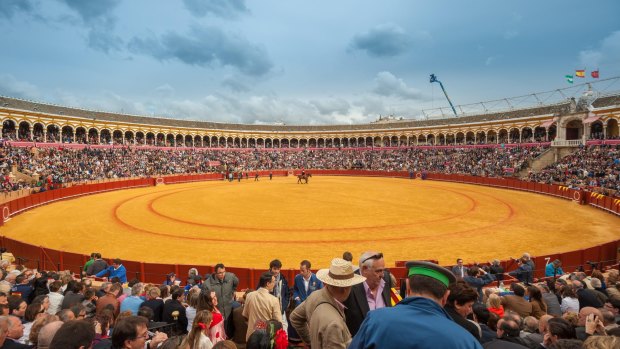
Corrida at Maestranza bullring in Seville, Spain.Credit: Alamy
We take the cheesy horse and carriage twilight ride from our hotel to the Seville's old city (the fourth largest in Europe) and find ourselves enchanted as we trot through wonderful parks and past spectacular colonial-era architecture before we even reach the old, heritage part of Seville.
We rock up to the flamenco club (in our case El Patio Sevillano in Paseo Cristobal Colon) and sit in perhaps the most uncomfortable seats outside a Dickensian classroom. Flamenco was born in Seville, so going to a flamenco club is virtually obligatory, though we're not expecting anything more than basic tourist fare. But suddenly our eyes and posteriors are rejuvenated as we are treated to such an amazing display of high energy dancing we are breathless at the end, even though we've just been watching. (For the record, I felt the men won the heeling-slapping, drama-king v drama-queen contest.)
We go shopping (or at least some of us do), not just in the souvenir shops around the cathedral but in the malls Seville has in abundance selling quality clothes, foodstuffs and gifts at a fraction of the price they would be in Australia.
But finally it comes back to the Fat Lady, Seville. Will she sing for us?
Lidia's tour, on a surprisingly balmy November afternoon, begins in the old Jewish quarter of the city. But for me it comes alive when she starts talking about the three famous operas set in the city of her birth.
As she points out, there are many other operas which reference the city, but these three are the holy trinity, virtually guaranteed to sell out any opera house where they are being staged in the world.
Our two-hour walk through beautifully cobbled, flower-lined, historic streets visits each of this most operatic city's high notes. Here they are, reorganised, opera by opera.
MOZART'S DON GIOVANNI.
At least Wolfgang Amadeus M based his opera buffa on an authentic Spanish legend: Don Juan, the Spanish fictional equivalent of the real-life Italian serial seducer, Casanova.
The Austrian composer never visited Spain, but that hasn't prevented Don Giovanni becoming the tenth most performed opera in the world.
"Mozart's opera was inspired by the legend of Don Juan Tenorio," Lidia tells us. "And that, in turn was based on a real 18th-century Seville nobleman, Don Miguel de Mañara."
Midway through our tour, Lidia stops in a picturesque square and points to a towering building on the corner.
"That's La Hosteria del Laurel," she says. "Today it's a hotel and a restaurant, but in the opera it was the place were Don Giovanni normally met with his friends to explain about his lovers.
"According to the opera, the Don had seduced "Mil i tre" women in Spain alone. That's 1003 Spanish women...Let's move on."
ROSSINI'S BARBER OF SEVILLE.
What is it about Seville and opera buffa?
Mozart had already written The Marriage of Figaro, based on one third of the trilogy by French playwright Pierre Beaumarchais.
And then along came Rossini with the most famous aria about Figaro some 30 years later: always likely to fool Trivia Night contestants who assume the famous operatic song about Figaro must feature in the opera bearing his name in the title. No, the "Figaro, Figaro, Figaro" aria everyone knows is a Rossini tune –basically just Figaro boasting about how he's so popular as a barber he virtually runs the town.
It is said Rossini took just three weeks to write the Barber of Seville: well, that's just showing off.
However the key site for Rossini lovers, says Lidia, is the exquisite balcony she points out now: "According to legend, that's Rosina's balcony," Lidia insists. "This was the balcony in the story. It was here that Figaro helped the young Count Almaviva to court his beloved Rosina by climbing up to her balcony with him and entering her room through a window."
Once again, we move on.
BIZET'S CARMEN
Of course you all know the story.
Don Jose, a soldier, falls in love with a volatile gypsy called Carmen who works in a cigarette factory in Seville. But when her attentions turn to the glamorous toreador called Escamillo visiting Seville's famous bullring, Don Jose kills Carmen in a jealous rage.
Lidia's version?
Well, it is a sign of how far Spain has progressed. We begin at an imposing building outside what would once would have been the old city walls,
"This emblematic 18th century building is where the first act of Carmen opens," she says. "At the time of the story it provided work for 4000 cigarette girls, like the fictional Carmen.
"Today the same building is part of the University of Seville."
At the end of our walking tour, opposite the bullring, Lidia asks us to look at the expensive real estate on the other side of the River Guadalquivir. It's hard to imagine that this land-locked city, some 80 kms from the Atlantic Ocean, was once one of the most important ports in the world, the starting point of historic voyages by Columbus, Vespucci and Magellan. "That's where the girls, like Carmen, waited for the tobacco to come from the Americas," Lidia says, pointing to the houses on the opposite bank. "The river is still navigable today, but these days Seville's port is located on the outskirts of town. Each year, more and more cruise ships come to Seville."
At Water Street – so called because of the former aqueduct which was built here by the Christians, though it is now the heart of the traditional Jewish Quarter – Lidia explains why we are here.
"Water Street is where Carmen persuades Don José to help her give her escort the slip," she explains. "Once free, she goes for a drink in Lillas Pastia´s tavern, probably located in this street."
Yet by far the most celebrated operatic location in Spain is the Seville bullring.
The 1984 movie version of Carmen, starring Julia Migenes as the heroine and Placido Domingo as Don Jose, broke new ground by being filmed largely in Seville, though the bullring scenes were actually shot in the world's oldest bullring, in nearby Ronda.
However the Plaza de Toros de la Real Maestranza de Caballeria de Sevilla is not only the second oldest bullring in the world, dating back to 1749, but also one of the most beautiful. Lidia tells us its imposing white, yellow and red facade is freshly repainted before each bullfighting season.
Our tour is nearly ended. But Lidia shows us the imposingly round, riverfront building called Teatro de la Maestranza. Strange though it may seem, this is Seville's first dedicated opera house, inaugurated in 1991. Before that, opera was held in one of the city's other multi-purpose theatres.
Like the bullring in Carmen, this opera house has been the scene of tragedy. In 1992, during a rehearsal for Verdi's Otello, a suspended platform which formed part of the scenery collapsed, killing a female member of the chorus and injuring 41 others.
It's a sad way to end an opera tour, but somehow apt. And yet we still left Seville singing, dancing and smiling.
TRIP NOTES
MORE INFORMATION
GETTING THERE
Emirates Airline has three daily flights from Sydney and Melbourne via Dubai to Lisbon and Madrid. See www.emirates.com/au.
TOURING THERE
Insight Vacations' 9-day Highlights of Spain visits Barcelona, Valencia, Granada, Seville, Madrid and includes a Signature Experience visiting Cordoba with a local expert. Priced from $2,525 per person, twin share (Single Supplement from $740). Each escorted journey has a host of Insight's hallmark inclusions such as Premium centrally located hotels, an experienced Tour Director, Signature Experiences and priority Experiences and priority access, authentic Signature Dining, business class legroom and smaller groups, free Wi-Fi and airport transfers. Departures available throughout 2015. For more information visit www.insightvacations.com or call 1300 301 672.
Lidia Dominguez, our tour guide, can be contacted on
The writer was a guest of Insight Vacations.
Sign up for the Traveller Deals newsletter
Get exclusive travel deals delivered straight to your inbox. Sign up now.